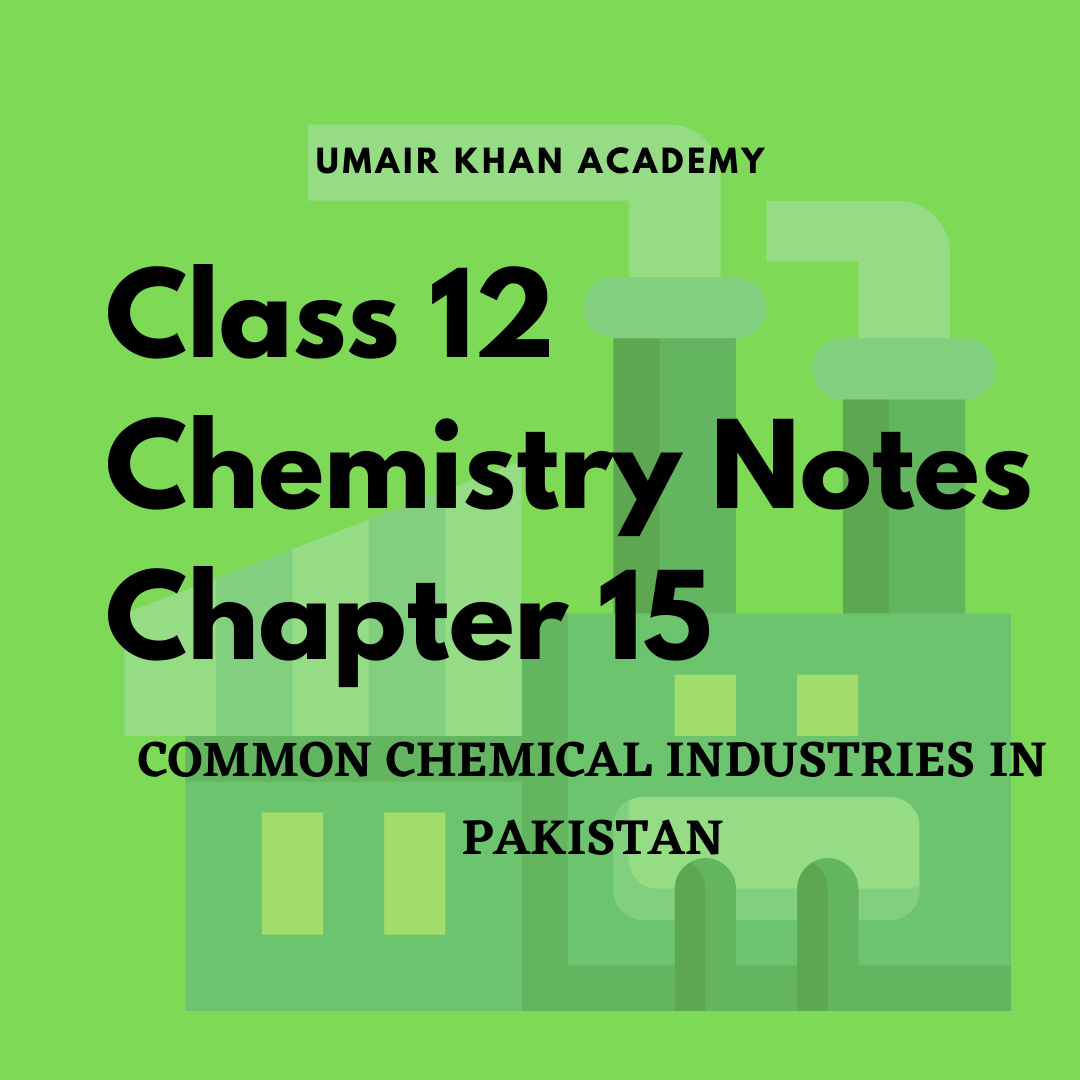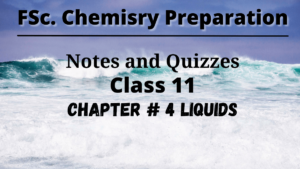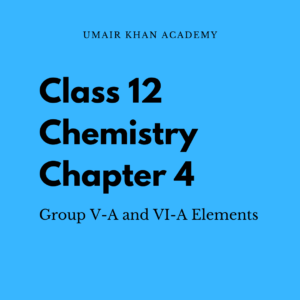Umair Khan Academy provides Chemistry notes (Important short Questions) for class 12. For more notes and lectures visit Umair Khan Academy & its YouTube Channel.
The following questions are very important short questions from an examination point of view with video discussion below for your help and easy understanding.
Q.1: What is the need for fertilizer?
Fertilizers are substances added to the soil to fulfil the deficiency of the important nutrients, needed for the proper growth of plants and enhance the natural fertility of the soil.
Q.2: What are the essential qualities of a good fertilizer?
- It should be cheap and easily available.
- It should not be injurious to the plant.
- It should not alter the pH of the soil.
- The nutrients present in it must be easily available to the plant.
- In rainwater, it should be converted into a form which can be easily assimilated by the plant.
Q.3: What is Manure?
An organic material used to fertilize the land and usually consists of faeces and urine of domestic livestock is called manure.
Q.4: Mention the steps in the manufacturing of urea.
- Preparation of hydrogen
- Preparation of Ammonia
- Preparation of Ammonium carbamate
- Preparation of Urea
- Concentration of urea
- Prilling
Q.5: What are the reactions occurring during the cement setting?
Reactions Taking Place in the first 24 hours:
- After a short time when cement is mixed with water tri-calcium aluminate absorbs water. This is called hydration. It forms a colloidal gel of composition, 3Ca.Al2O3.6H₂O
- The gel crystallization takes place slowly. It reacts with gypsum (CaSO4.2H2O). It gives the crystals of calcium sulpho-aluminates (3Ca.Al2O3.3CaSO4.2H₂O)
Reactions Taking Place between 1 to 7 days:
- Tricalcium silicate (3CaO.SiO2) and tricalcium aluminates (3CaO.Al2O3) get hydrolyzed. In this way Ca(OH)2 and Al(OH)3 are produced.
- Ca(OH)2 is changed into needle-shaped crystals. It develops strength.
- The Al(OH)3 fills the spaces. It causes the hardening of mass.
Q.6: Why Nitrogen is important for plants?
Nitrogen is essential for the rapid growth of plants. It is the main constituent of proteins. It gives green colour to the leaves and increases the yield of crops and the quality of products.
Q.7: What do you mean by Prilling tower?
Molten urea is sprayed at the prilling tower. It is done using buckets. The molten Urea is cooled by air which rises upward. The molten droplets of Urea solidify in form of prills.
Q.8: What is the importance of phosphorous for plants?
It has the following importance:
- Phosphorous stimulates the growth of plants.
- It accelerates the seed and fruit formation
Q.9: What is the importance of potassium fertilizers?
- It increases the resistance to disease and frosts.
- It increases the resistance to disease
- It gives healthy roots development
- It helps in the ripening of fruits
Q.10: How potassium nitrate is prepared?
KNO is prepared on a commercial scale by a double decomposition reaction of KCI and NaNO3. it contains 13% nitrogen and 44% potash
Q.11: What is the Historical background of Portland cement?
An English mason Joseph Aspdin heated a mixture of limestone and clay with water, allowing it to stand. The matter was hardened like a stone. This hardened mass resembled Portland rock.
Q.12: How do you define cement?
A material obtained by heating calcareous and argillaceous material at sufficiently high temperatures to produce clinker. This clinker is consequently ground to a fine powder.
Q.13: What are Clinkers?
It is the final product of the rotary kiln and comes out in the form of small greenish-black coloured balls. Their size varies from small nuts to peas.
Q.14: Give different zones in the Rotary kiln.
- Drying or Preheating Zone: The temperature is 500C.
- Decomposition Zone: The temperature range of this zone is 800C.
- Burning Zone: The temperature of this zone is 1500C.
- Cooling zone: The temperature of this zone is 150°C -200°
Q.15: What do you mean by Setting of Cement?
The reaction of cement with water over time is called the setting of cement, and the setting time is noted.
Q.16: What are the micronutrients of plants?
The elements which are required in small quantities for plant growth are called micronutrients. Copper, manganese, zinc, boron iron, molybdenum and chlorine are micronutrients. The quantity required per acre ranges from 6 g to 200 g.
Q.17: Which raw materials are used for cement?
Important raw materials for the cement industry are
- calcareous materials; limestone, marble, chalk marine shells.
- Argillaceous materials, clay, shale, and slate.
- Gypsum.
Q.18: Which process is mostly used for the manufacturing of cement in Pakistan?
There are two manufacturing processes for cement
- Dry process
- Wet process.
The choice of dry or wet process depends upon the physical conditions of raw materials, local climatic conditions of the factory and fuel prices. In Pakistan, mostly wet process is used. The wet process is free from dust, grinding is easier and cement composition can easily be controlled.
Q.19: Write the names of woody and non-woody raw materials for pulp making.
Woody materials are poplar, eucalyptus and Douglas-fir.
Non-woody materials are wheat straw, corn straw, cotton stalk, bamboo, rice straw etc.
Q.20: What is the N.S.S.C method for the manufacture of paper?
It is a Neutral sulphite semi-chemical process and the following steps are involved.
- Cutting the raw materials
- Dry cleaning
- Wet cleaning
- Screening
- Digestion
- Blow tank
- Pulp washing
- Bleaching
- Stalk Preparation Plant
- Paper making machine
Q.21: What are commonly used Bleaching agents for the manufacture of paper?
- Chlorine
- Oxygen
- NaClO
- H2O2
- Ozone
- CIO–



